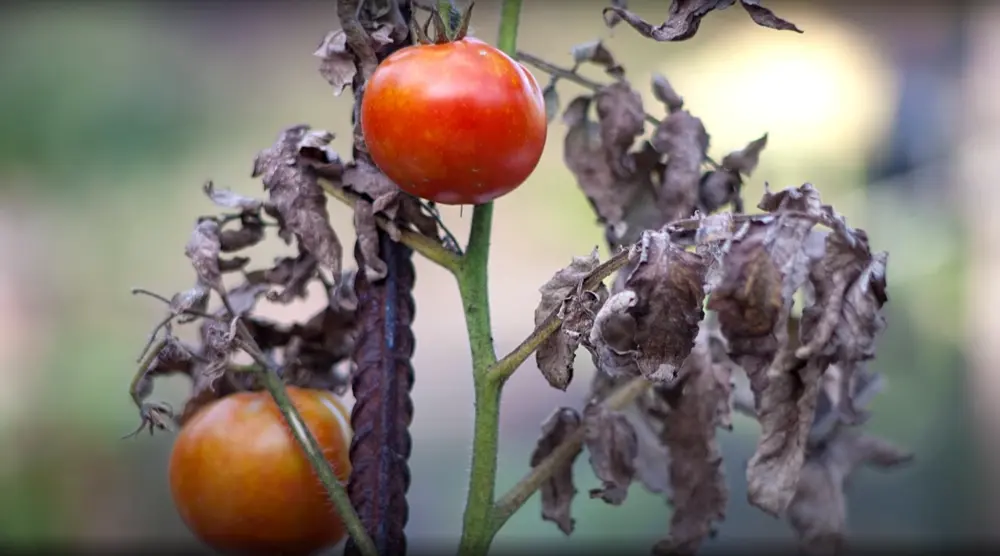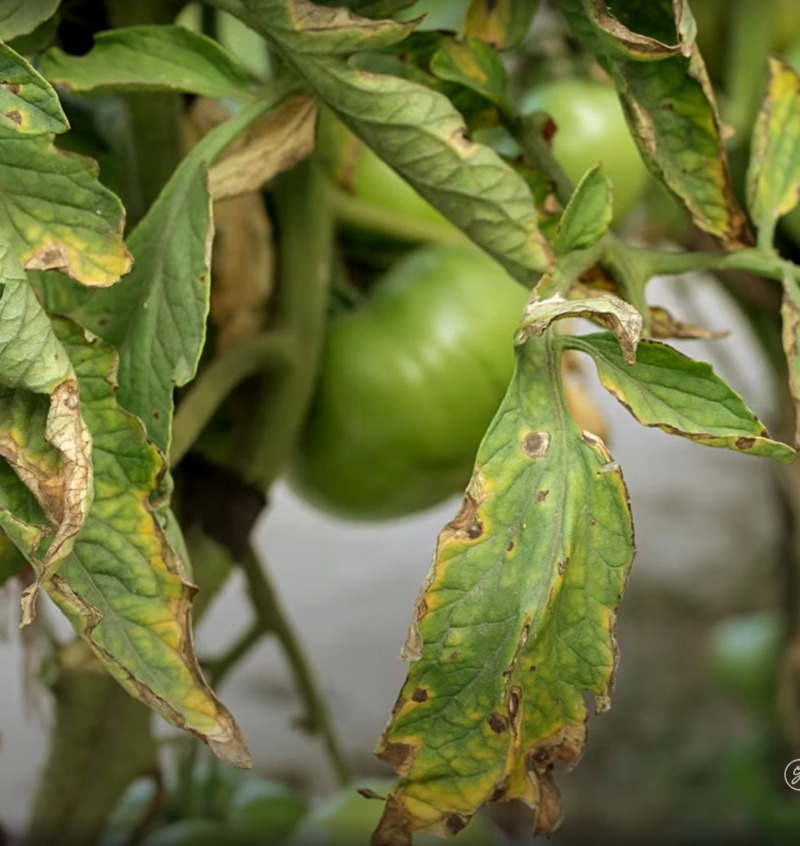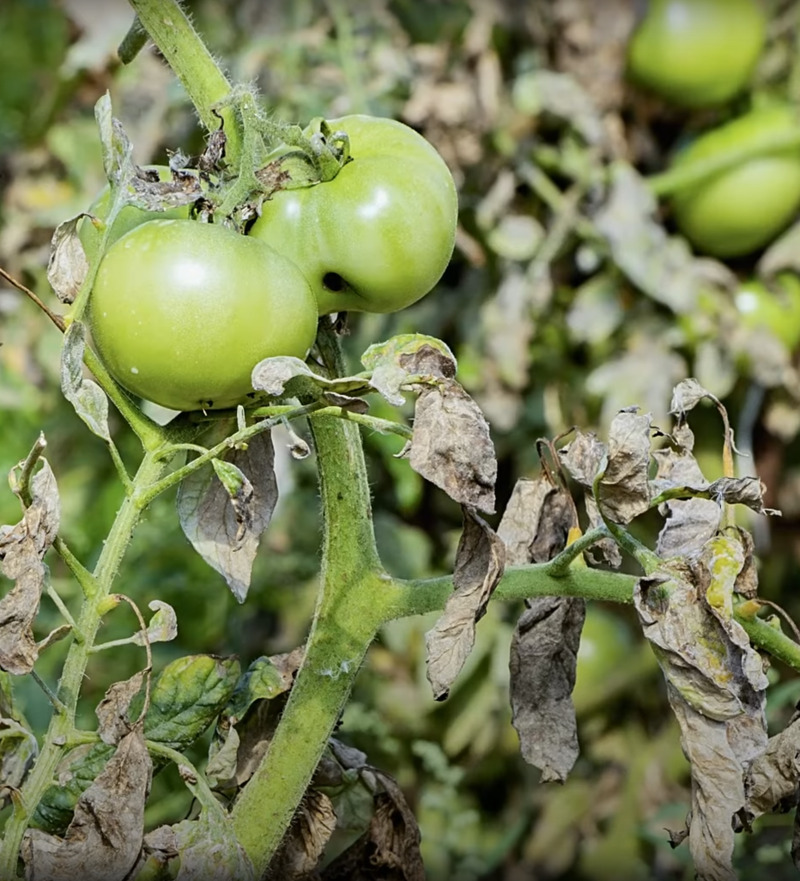

You’ve spent weeks, maybe months, lovingly tending to your tomato plants. You’ve watered, watched, and waited for those plump, juicy tomatoes to grow. Then one day, you spot something troubling – those once-vibrant leaves are turning brown at the edges. What gives? It feels like a punch to the gut, especially after all that hard work. Are your tomatoes doomed? Not so fast! Before you panic, let’s break down some common reasons why your tomato plants might be showing signs of stress and what you can do to turn things around.
Off course, knowing the reasons behind this can be helpful for you to prevent your tomato plants in your vegetable garden. Below are some of the common reasons for your tomato leaves turning brown:
Tomatoes can be divas when it comes to water. Too much, and they get soggy, unhappy roots. Too little, and they practically throw a tantrum, with leaves turning crispy brown in protest. The trick is finding that perfect balance, where the soil stays moist but not drenched. You don’t want your tomatoes sitting in a swamp, but you also don’t want them gasping for a drink. One quick way to check if you’re over- or underwatering is to dig your finger about an inch into the soil. Does it feel like you just touched a sponge? Too wet. Bone dry? Time for a good soak.
Pro-Tip: Watering early in the morning can give your plants a fresh start to the day without letting moisture sit on the leaves overnight, which invites other problems (we’ll get to that).

Tomatoes love the sun, right? So how could too much sunlight be bad for them? Well, just like we can get sunburned, so can your tomato plants. If they’re in direct sunlight during the hottest part of the day, their leaves can get scorched, leaving you with brown, curled edges that look a little too much like crispy bacon. This often happens if your plants are in pots or raised beds, where the soil dries out quicker. They need a bit of shade – especially in scorching mid-afternoon heat. Think of it like this: you wouldn’t sit out all day in the sun without a hat, right? Same goes for your tomatoes.
Quick Fix: Try using a shade cloth during peak sun hours, or simply move potted plants to a spot where they can get some reprieve from the harsh rays.
Your tomato plant might be sending you a distress signal: “Feed me!” Just like people get cranky when they miss a meal, your plants start to suffer without the right nutrients. If those brown leaves come with yellow spots or curled edges, you’re likely dealing with a nutrient deficiency. Potassium and calcium are two of the big players here. Without enough potassium, leaves will brown at the edges, and a calcium deficiency might lead to blossom end rot – that weird, mushy spot at the bottom of your tomatoes. If you haven’t been fertilizing, or if you’re using poor soil, your plant may just be hungry for some good old plant food.
Pro-Tip: A balanced fertilizer, or even compost, can work wonders. Look for something with higher potassium levels to help your plants regain their vibrant green health.
Pests can be sneaky little monsters. You might not see them right away, but they could be munching away on your plants, leaving behind brown, damaged leaves as evidence. Aphids, spider mites, and whiteflies are common offenders. These tiny pests suck the life out of your plants—literally—by feeding on the sap in the leaves, causing browning, curling, and general misery. Look closer at the undersides of leaves for small, sticky spots, tiny bugs, or even webbing. If you spot any of these, you’ve got a pest problem on your hands.
Pest Control Tip: Spraying a mix of water and dish soap can help wash away pests. For bigger infestations, look into insecticidal soap or neem oil for a more targeted approach.

Fungal diseases are one of the most frustrating issues you’ll face as a tomato grower. These diseases, like early blight, late blight, and leaf spot, thrive in humid, wet environments. They start off as small brown or black spots on the leaves and can quickly spread, causing entire leaves to yellow and die. If you notice dark spots or a fuzzy white film on the leaves, fungi may have moved in. Moisture sitting on the leaves overnight, especially in damp weather, gives these sneaky invaders the perfect opportunity to strike.
Solution: Prune affected leaves immediately, increase airflow by spacing out plants, and consider a fungicide to stop the spread.
Did you recently repot or relocate your tomato plants? If so, they could be experiencing transplant shock. Just like when people move to a new house, plants need time to adjust to their new digs. During this period, they may look a little worse for wear, with leaves turning brown or wilting. But don’t freak out! This is usually temporary. Give them a week or two to settle in, and they’ll likely bounce back.
Care Tip: Make sure to water consistently after transplanting and give them a little TLC with a diluted fertilizer to help them recover from the move.
Brown tomato leaves might feel like a disaster at first, but they’re usually just your plant’s way of telling you something’s off. Whether it’s water, sun, nutrients, pests, or disease, there’s always a way to solve the problem. Take the time to diagnose the issue, tweak your care routine, and before you know it, those brown leaves will be a thing of the past. Your tomatoes will thank you by bouncing back healthier than ever.
Gardening isn’t always easy, but that makes it all the more rewarding when you get it right. Happy growing!